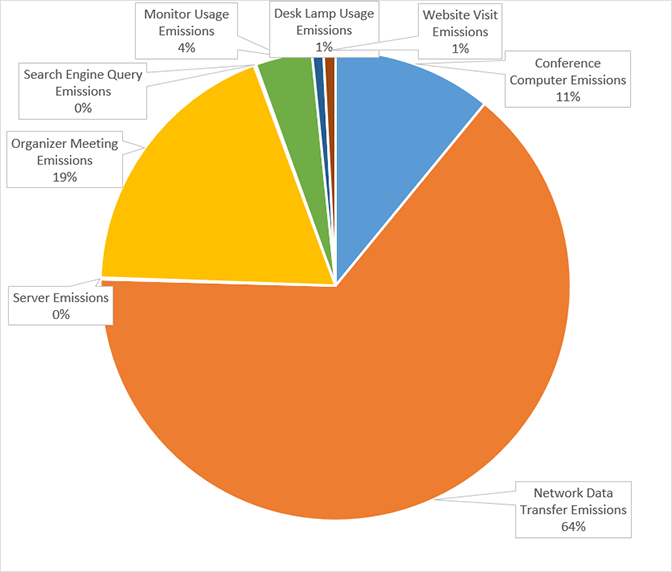Video conference CO2 emissions quantified in new study
Reducing virtual conferencing’s environmental impact can be achieved with steps both big and small.
Reducing virtual conferencing’s environmental impact can be achieved with steps both big and small.
The virtual conferencing that has replaced large, in-person gatherings in the age of COVID-19 represents a drastic reduction in carbon emissions, but those online meetings still come with their own environmental costs, new research from the University of Michigan shows.
The research offers a framework for analyzing and tallying the carbon “cost” of an online conference based on factors that include everything from energy used by servers and monitors to the resources used to manufacture and distribute the computers involved.
It also includes a case study showing that a May 2020 virtual conference held by the AirMiners carbon removal networking community produced 66 times less greenhouse gas emissions that an in-person gathering in San Francisco would have.
And it highlights steps that online meeting hosts and attendees can take to further reduce associated emissions.
Grant Faber, a research assistant with the Global CO2 Initiative at the College of Engineering, said the method he developed shows that virtual conferencing’s environmental impacts remain significant, particularly in light of increasing connectedness to the internet and use of video conferencing software.
“There are projections that say by 2030, information and communications technologies may use more than 20% of the global electricity supply,” he said. “And as time goes on and more and more people become connected to the internet for more energy intensive activities, such as Bitcoin mining, they’re only going to use more and more electricity.
“It’s important to know the true cost of our online behaviors and, by quantifying it, we can take action. As an example, our AirMiners conference was able to estimate our impact and purchase carbon removal offsets to make the event carbon negative.”
Faber’s system for gauging the energy usage from a virtual conference looks at:

Computer and monitor emissions are estimated by tallying total life cycle emissions based on the number of hours they were used for the conference. Emissions from network data transfer and server use were calculated using their respective energy consumption during the conference. Conference-related website visits and search engine queries also generated emissions that were uncovered using existing estimates per visit and per search.
Faber offers steps for both industry and individuals that could lessen the environmental impact of virtual conferencing. Industry could start by Improving the energy efficiency of the hardware and software involved in conferencing can have a trickle down effect. Platforms such as Zoom may be able to decrease data rates while preserving quality simply by updating their software and servers. And powering computers, network infrastructure, and data centers with renewable energy can reduce emissions of virtual activities in a substantial way.
Individuals could skip features like gallery view, disable HD video, and repair instead of replace computers to extend their useful lifetimes.
“In order to address climate change, we need to develop an awareness of the CO2 emissions associated with specific actions we take in our daily lives— similar to how we have learned to watch calories to maintain a healthy weight,” said
Volker Sick, an Arthur F. Thurnau Professor in Mechanical Engineering, the DTE Energy Professor of Advanced Energy Research and director of the Global CO2 Initiative. “Grant’s work quantifies this for the growing relevance of video conferences.”
The paper, titled “A framework to estimate emissions from virtual conferences,” is published in the International Journal of Environmental Studies.
The research is supported by the University of Michigan’s Global CO2 Initiative.